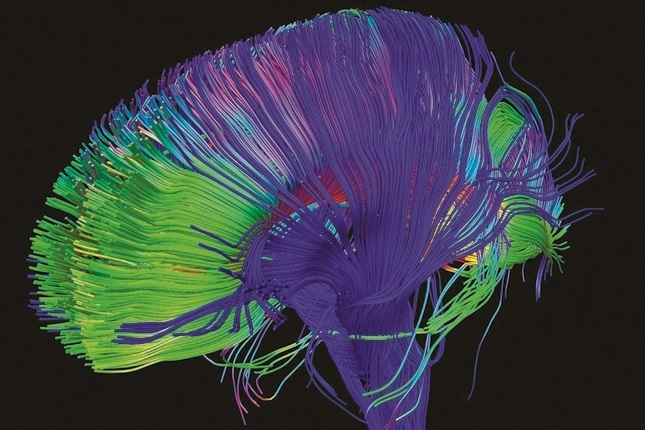Introverts and Extroverts: The Brain Chemistry Behind Their Differences
By: Other | December 16, 2016

Written by Melissa Hansen, Psy.D.
I’m standing in a crowd of people at a conference after the last session. My colleagues – all extroverts – are across the room engaging others in conversation and laughing loudly. I was engaged for a while, but now I’m ready to head home and call it a day. The loud volume in the banquet hall, the dense crowd of strangers, and the small talk I’ve had to make all day has left me feeling drained. It’s just too much, for too long… for an introvert like me.
Contrary to popular belief, being an introvert doesn’t mean shyness. In fact, I do not consider myself to be “shy”, and I don’t think of myself as lacking self-confidence, either. In fact, I love talking to people and meeting new, interesting people. I can certainly have fun at a concert or enjoy a dinner with a group of friends. Yet, my extroverted friends could probably stay at the concert, chatting long past the encore. They’ll actually feel more energized when they leave and won’t need any recovery time. I’d rather be in the peaceful solitude of my apartment. Just me and my dog, no noise, maybe a good book or Netflix to help me turn inward and recharge after this much socializing.
What is the difference between extroverts and introverts?
For extroverts, lively social engagement is refreshing and energizing. Extroverts like to solve problems by discussing them with others, take action before thinking things through, and feel easily bored and restless when spending time by themselves. Introverts, on the other hand, are easily drained by large social engagements, and prefer small groups or one-on-one interactions. They feel re-energized by spending time alone, and need time to mull things over before making decisions. So, which one are you? Either way, I’m here to tell you that it’s all in your head. No, no, I’m not saying your imagining this dimension of your personality. I’m saying that the reason some people thrive on being the life of the party while others prefer to curl up on their couch with nothing more then the company of a good book, is because our brains are different!
The Neurochemical Difference
The best way to explain the differences between introverted and extroverted brains is by bringing attention to three key chemicals in our brain: dopamine, adrenaline, and acetylcholine. Let’s start with the “feel good chemical”: dopamine. We love dopamine because it rewards us with feelings of happiness when we engage in certain behaviors. These pleasurable effects reinforce and motivate us to repeat behaviors that stimulated the release of dopamine. Now, if we throw adrenaline into the mix, which is sparked by things such as risk taking, novelty, and physical and environmental stimulation, even more dopamine is released! Herein lays our first difference between extroverted and introverted brain. It turns out that extroverts have more dopamine receptors in their brains than introverts do! This finding means that extroverts need more dopamine to feel happy because they are less sensitive to it. The more they talk, move, and engage in stimulating activities, the more extroverts feel dopamine’s pleasant effects. In contrast, introverts are sensitive to dopamine, so all of that stimulation makes them feel overwhelmed and anxious.
Much like dopamine, acetylcholine is also linked to pleasure, but its effects are much more subtle. Acetylcholine makes us feel relaxed, alert, and content. It also fuels our ability to think deeply, reflect, and focus for long periods of time on one thing. When we engage in activities that are low-key, calming, and mentally engaging, we activate the release of acetylcholine. For extroverts, the pleasurable effects of acetylcholine pales in comparison to the jolt of happiness they experience from dopamine. However, introverts crave acetylcholine. So, while extroverts are out and about enjoying the benefits all those extra dopamine receptors, introverts are happily lounging at home with a book and a pleasant dose of acetylcholine.
Tips for Great Introvert-Extrovert Relationships
We live predominantly in a fast-paced, loud, and crowded world. Although this may be pleasing to the dopamine-needing brains of extroverts, it can be overwhelming to the introverted brain. Introverts may experience strain finding compatible friends and partners, creating boundaries with family members, and navigating the stressors of work life. Extroverts, on the other hand, may have difficulty knowing how to approach introverts and engage them as friends or partners, and adapt to a different pace when collaborating with introverts. Below are some tips to help us better understand each other and relate to each other in a more positive and effective way:
- Try not to “cast-type” each other. Even introverts can enjoy a large social gathering and extroverts can enjoy some time alone
- Allow each other space and time to “recharge our batteries” – whether that’s going out with friends, or staying at home with a book
- If you are an extrovert, don’t take it personally when an introvert needs some time alone; it’s not you – they just need time to recharge
- For introverts, it will be helpful to understand what particularly overstimulates you. Then, you can suggest alternatives with your friends and partner so that you are in the most optimal environment to enjoy his or her company
Lastly, know that you are not alone. If you are struggling with understanding either yourself or someone else who is different from you, try connecting with others who share similar traits. There is a great deal of support that can be gained by validating your need for space, or for socialization. If you are in a relationship where you and your partner are on opposite ends of the spectrum, you may benefit from Couples Therapy to help develop strategies to strengthen your connection and improve communication. Above all, know that there is nothing wrong with being the way you are. Having differences in relationships is not only natural, it can be the most healthy.
Image: NICHD on flickr and reproduced under Creative Commons 2.0



